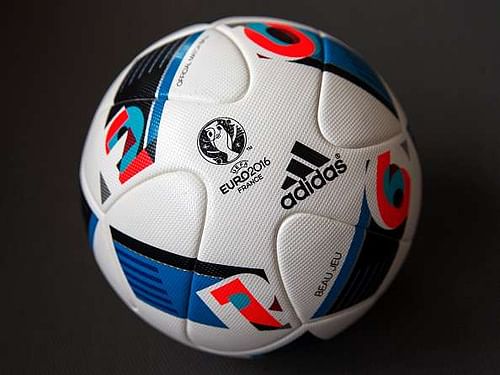
5 most memorable footballs used in international tournaments
With less than a week to go for Euro 2016, the focus shifts to the quadrennial tournament in France that kicks off on 10 June when the hosts take on Romania in the first group stage fixture. An all-new format sees 24 teams battling it out for continental supremacy in the 15th edition of the month-long tournament.
As with every international tournament, one thing always ends up being a talking point by itself – the football used. Over the years, players and fans have witnessed the evolution of the ball as more complex scientific processes go into designing what goes into the sphere that is eight inches in diameter.
Euro 2016 will see an Adidas football by the name Beau Jeu – meaning ‘Beautiful Game’. It was unveiled in November last year by France legend Zinedine Zidane and was a ball that took 18 months to develop. According to Adidas, the ball has “improved grip and enhanced in-flight visibility”.
With that in mind, we look back at some of the more memorable footballs used in recent international tournaments.
1) Fevernova – 2002 World Cup
The 2002 World Cup in South Korea and Japan was a tournament of many upsets and a number of those results were attributed to the design of the ball. FIFA regulations give floor and ceiling values for how much the ball’s circumference and weight can be and this ball was designed to meet the floor value of the circumference while nearing the upper limit for weight; meaning it was smaller but heavier than traditional balls at the time – an odd combination to improve trajectory.
It is no wonder then that many players were unhappy with the design. None more so than Italy goalkeeper Gianluigi Buffon who said it was a “ridiculous kiddie's bouncing ball”. And it wasn’t exactly on the heavy side either. Rivaldo, one of Brazil’s best players at the tournament, actually detested the ball claiming it travelled too far when it was kicked.
The ball itself was 435g and 3mm thick with a number of layers in between. One such layer was made of foam with microscopic gas bubbles embedded inside it. The outer layer was made of natural rubber and synthetic polystyrenes (polyurethane). The outer design had triangular shapes on the hexagons with colours revolving around east Asian cultures.

